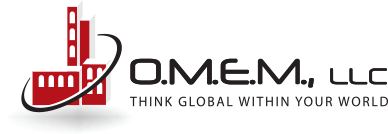Regardless if you are considering a partnership or have already entered into one, I highly recommend reading my previous posting. Once the groundwork has been established everyone should have a higher level of confidence in the future success knowing each stakeholder has a clear understanding of their ownership role and stake in the business. Hopefully, during that process, roles have been defined and established for all stakeholders who have an ownership piece in the organization. If not, this is a key step and before moving forward, while the requirement of creating specific job descriptions and roles of responsibilities must be defined. They have to be clear, fully understood, and agreed upon by all stakeholders. Get the business structural points of contention regarding running the organization out of the way so the focus can be strictly on operations within the organization.
Regardless if the business is managed by family, separate investors, or friendships, one of the hardest things to overcome is the ability to rise above the emotional relationships and managing the business following good sound business practices. This is easily done when there is an established clear vision of the direction for the organization, followed by a set of well-defined role descriptions. Three main roles should exists but which typically include someone to oversee the entire organization, an Operations Manager, and a Financial Manager. While other roles will exist, these are the three main roles at the top of the organizational hierarchy
aka, the leaders at the top of the food chain so to speak. Other roles considered will need to be clearly defined as to their placement within the organizational hierarchy. Each role should have a defined area of responsibility, established expectations of control, and performance level expectations. These expectations will not only set the ground work for whom ever fulfills that role, but will also establish a clear understanding by everyone else. Other roles can certainly exist, but it is important to be mindful of too many leader type roles can become cumbersome and wasted costs, while too few can result is high workloads and inadequate performance. Finding the right balance is key and may need several iterations to get it right.
Communication is a vital factor in maintaining interactive business practices. Each role should have established performance expectations. While often times these are thought of as growth or targets for reductions, increases to specific business processes, functions, and/or costs. Other performance expectations should be regarding direct day to day functions and routine communication efforts. For example; the finance leader should be expected to report specific and general financial health and aspects of the finances. The Operations leader should be reporting specific and general operational health and aspect of the operations. The overall business leader should be reporting the health and aspects of the organization that pertain to the overall business structure, growth, etc. Often times I see smaller businesses not doing formal reporting or holding routine report meetings. Everyone seems to assume the other is doing their part but once the formal tracking and reporting is viewed, trends are highlighted and can drive further scrutiny ahead of simply waiting to failure
or even providing the opportunity to exploit or pursue an opportunity. Each report should provide a window into the respective piece of the organization and provide an opportunity for questions and answers. Without routinely viewing the other pieces of the Business puzzle, it becomes difficult to understand the impact of one specific roles fit within the entire picture.
Once the legalities are established, then it becomes simply good business management with routine communication, business practices, and defined processes that drive current and future decisions. Again, it is the collaborative and collective interaction between all leadership roles that will drive an organization forward to success, or if there is lack of it, backwards to failure. The entire picture must be fully understood and viewed if the business is going to head off declines and build on successes. This is best done by running routine reports, charting progress, and discussing trend lines. Family run organizations seem to struggle more on this piece due to the feelings of intrusion on each others assigned roles. In these cases, it is important to rise above the emotional aspect and function to what is in the best interest of the organization as a whole. It is also the only way to objectively see the whole picture. Personalities have to be put aside and if everyone truly has the best interest of the business at heart, defined roles and expectations to facilitate accurate reporting is the only way to drive everyone in the same direction and increase the chances for sustainable success. This becomes even more crucial when employees are involved and the Business is their livelihood.
O.M.E.M., LLC – Helping Businesses Improve
Stay Well
Scott B.
0 Comments
Leave a reply
You must be logged in to post a comment.


